Introduction
Agnikarma is a local application of a specific amount of heat to relieve pain.
Vata which is trapped in sandhi, snayu and asthi should be treated with Snehana, swedana, Agnikarma, Bandaging, Massager till the patient gets total relief. The procedure should be repeated again and again to relieve the pain of the patient.
Snehana or Oleation Therapy, is one of the most important therapies that prepares the body to receive specialized Panchakarma treatment. It involves the application of medicated oils, ghee and herbs to the body internally and externally for three to seven days. Vata being ruksha in nature is relieved by snehana if it is in a nirama state (without ama), Swedana (Swedana is a form of therapy that uses herbal steam to release toxins from the body through the skin). Vata is relieved by dry and wet fomentation. Mardan is a therapy where body parts are scientifically manipulated to facilitate circulation, flexibility and to strengthen joints and other body structures. In muscular pain or joint pain mardan or massage in a scientific way gives relief. Bandha, Vyadhan and Agni Karma are the treatment modalities for Vata dominant Shula (Pain).
Vitiated vata in relation to Twacha (skin), mamsa (muscles), sira (veins), Snayu (tendons) and Asthi (bones) gives rise to intense pain. This pain is relieved by agnikarma.
If there is no relief in the pain by snehana, swedana then raktamokshana should be carried out. This should be followed by agnikarma. Painless hypergranulation in ulcer, granthi, (growth), arsha (piles), tumours, fistula, warts, moles, hemostasis of cut vessels or a bleeding tract are other indications of agnikarma.
In agnikarma the depth is important. To relieve pain in twacha (skin) and mamsa (muscle) agnikarma is performed superficially at the depth of the skin. Deep agnikarma is for pain in the sira, snayu, sandhi and asthi.
Tools for Agnikarma
Some herbs, some food items and some metals are used to perform agnikarma. They are as follows:
1. Herbs- Piper longum (Pippali), Turmeric (Haridra), Semicarpus anacardium (Bhallataka).
The temperature of Piper longum herb after heating is 57℃. Turmeric is used in Piper longum is indicated in jaundice, liver and spleen conditions. The temperature of turmeric after heating is 67℃. The temperature of Semicarpus anacardium is 54℃.
2. Food Items- Jaggery (Guda), Honey (madhu), Clarified butter (ghee).
For relief of pain in sira, snayu, asthi and frozen shoulder these food items heated at a temperature of 60℃ can be used.
3. Metals- Gold (Suvarna), Iron (Loha), Copper (Tamra), Silver (Raupya).
The gold probe is heated to a temperature of 98-100℃ indirectly. It is used to relieve a person from neuralgic pain in cervical spondylitis, neck pain, brachial neuritis, lumbar spondylitis, sciatica pain, knee joint arthritis pain and any other pain related to snayu, sira and asthi.
The iron probe is used to cure corn and warts. It is heated up to 228℃.
4. Other material- Mud probe (Mruttika shalaka).
It is heated up to a temperature of 80-100 ℃. It is used to relieve heel pain due to calcaneal spur.
All the above tools except gold probe are used by direct heating them and applying on the affected body part. Gold probe is used by heat conduction method, i.e. indirect heat.
For agnikarma with a Gold and Iron probe following are the requirements:
1. Blunt probe of gold having length of 7 cms, thickness 2 mm, wt. 3 to 4 gms, 70% gold, 30 % silver and copper in traces
2. Iron probe of length 25 cms
3. Candle, probe holder
4. Matchbox
5. Ghee or Vaseline.
Contraindications for Agnikarma
1. Agnikarma should not be performed at night or cloudy, rainy weather or severe cold weather. However, in emergency conditions the treatment can be given.
2. A patient with a history of neurogenic shock for simple prick or sight of blood.
3. Skin infection at the place of agnikarma.
4. In pregnant women it should not be done at the lumbosacral region.
While performing the procedure on diabetics and hypertensive patients the sugar levels and blood pressure should be in a controlled state. Agnikarma can be done on children above 10 years of age.
Physician who is performing agnikarma on a patient must be well versed with the knowledge of marma points. The physician should avoid injury to the marma points.
Types of Agnikarma
Bindu (dot), vilekha (line), valaya (circle), and pratisarana are the four types of agnikarma. Generally, bindu, vilekha and valaya agnikarma are used. After agnikarma honey and ghee is to be applied to the treatment area.
Conclusion
Agnikarma is easy to perform, and gives quick relief to the patient.

Rosenberg Ayurveda and Wellness-Consulting AG
European Academy for Ayurveda Switzerland
Büelstrasse 17
CH-6052 Hergiswil NW
info@ayurveda-symposium.org
Newsletter
* I have the Privacy policy taken note of. I agree that my details and data for answering my enquiry are collected and stored electronically.

2024 © Rosenberg Ayurveda Academy gGmbH